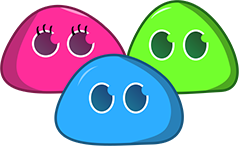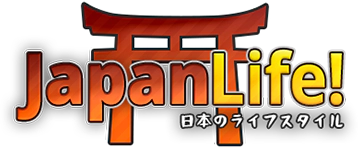The Japanese culture is vast and exciting, and without
Yokai 妖怪 influences, Japan would be very
different than it is today. In this editorial, we will be
discussing the Yokai, its history, lost history, and how it has
changed Japan. For the sake of convention, Youkai (as correctly
spelled with our romaji type) will be written as Yokai as it is
most commonly written on the Internet.
In Western folklore there are Trolls, Goblins, Ghouls, Ghosts and
Witches all of which have sets of personalities, traits, and moral
stories associated to them. The Japanese culture has their own set
of folklore beliefs that originated in the 1st century when it was
described as a supernatural phenomenon that surpasses human
beliefs. It would be a few hundred years later in the Heian era
(794-1185/1192) before Yokai received more spiritual recognition as
Mononoke, which was described as in the Pillow Book (
Makura no Soushi 枕草子).
At the time, picture scrolls depicted stories of Yokai and most
were depicted through word of mouth rather than drawings. At about
the 13th century, Yokai were manifested into household objects.
Later in the 17th century, Yokai was given more form when the
Printing Press was introduced. Many more stories were written and
what was once a frightening folktale started to become more of a
form of entertainment for both children and adults. Storytelling
was a popular pastime, and would often be held around a
kotatsu.
One of the early stories from the Tsukumogami picture scroll
involves a group of personal belongings were tossed away by their
owners. As Yokai (
objects with souls) they were very upset
and conspired revenge. They went and talked to other discarded
Yokai and built a Shinto shrine exactly like the humans would. They
then had their own festival praying to their own deities and
sacrificing objects like humans would.
To them, they were having their revenge because they were mocking
humans and their lifestyle. It is believed that from this event,
Yokai continue to mock the lifestyles of humans, living life as a
parody and thus giving example that human behavior is often
wasteful.
Yokai manifestations like in the movies have been said to be real,
many believe it, and some have experienced it such as testimonial
accounts of wrestling with Kappa, and there have been supposed
evidence of dead Yokai.
The
Neko Musume (Cat Girl) has
been said to exist in the Edo period and while there are no
photographic evidence of her existence, legend has it that she was
born in our world as both cat and human. Scientifically speaking
she may have been born with Hypertrichosis (
Ambras Syndrome)
where an abnormal amount of hair is grown all around the body.
Regardless, there are no scientific evidence of Yokai’s existence
however there are various shrines in Japan that have what they
claim to be body parts or whole bodies of Yokai such as the
Sougenji Kappa-Dera Temple in
Taito Japan.
Around the 17th century, Yokai became a popular form of
entertainment, from storytelling to children games, Yokai was
everywhere. The more popular games played were
Sugoroku,
Karuta, and
Menko.
Fun fact: Menko is what inspired the popular 90s game
POGs.
Yokai was often placed on doors, inside clothes, and decorations
indoors and out. Today, Yokai continues to be popular among both
children and adults across Japan spanning across many Anime, Manga,
Drama, and Movies. One of the most popular Manga and Anime series
of all time is called
GeGeGe no
Kitarou which involves a half-human-half-yokai character
named Kitarou whom fights for peace between Human and Yokai
worlds.
This series was created in 1960 by war veteran and artist
Shigeru Mizuki. The folklore
depicted in this series was meticulously researched throughout
Japan and revived the Yokai culture. Modern Yokai culture is
attributed to Mizuki’s work.
Japan has faced some dark times; one of those moments was during
the Meiji era when Japan was adopting scientific thinking in lieu
to traditional beliefs, this period was known as the modernization
of Japan or the
Meiji Restoration
period. This period involved the denouncement of Yokai and
book burnings of supernatural history. It was an embarrassment at
the time to admit to believing in the supernatural and as a result
very few documents survived the book burnings. The stories were
kept and spread only by word of mouth until the
Showa period (1926-1989).
There’s a misconception that Yokai and Ghosts are the same thing
but there are many differences between the two. Anything can be a
Yokai, they are inanimate objects with a “soul” therefore a lamp, a
drape, and even a computer can be considered a Yokai. Yokai
embodies everything but Ghosts are spiritual remnants of the
living.
Not all Yokai are based on inanimate objects, in fact both the
Tanuki and
Kitsune are real but are thought to have
mystical god-like abilities. The Tanuki is a (real) raccoon dog but
in folklore they are thought to have the ability to shape-shift
into objects, other animals and humans. They are cunning and
deceiving, but their malicious deeds are more mischievous than
actual harm. The Tanuki is often portrayed with a hat, sandals, and
very big testicles and as shape shifters they can pretend to be
almost anything even a Fox.
The Kitsune (Fox) is also a K9 thought to have magical powers. The
Kitsune comes in many forms from a simple ordinary Fox to a nine
tailed fox called
Kyuubi no
Kitsune. They are thought to be very sly, cunning, and very
good at deceit but are also regarded as powerful gods.
Legend has it that when a Kitsune reaches the age of 100, they
acquire the ability to shape shift into human form and gain more
tails. While it may not be easily possible to discern humans from
Kitsune in the form of fellow Humans, it is said that when they
encounter dogs, they get frightened and thus, turn back into their
fox form. The Kitsune can be either benevolent or malicious
depending on their personality. They may bring blessings to
villages and rice fields, or they may bring powerful curses and
possess humans.
It would be unbelievably difficult to write about every Yokai ever
imagined, however common Yokai can be categorized into different
classes. Here are the different classes to get readers
started.
Animal Type
These Yokai are based off of actual animals such as a Fox
(Kitsune), Racoon Dog (Tanuki), Dogs (Inugami), Snakes (Hebi), and
so forth… Animal based Yokai tend to be the most powerful of all
Yokai and demonstrate powerful abilities. The
Maneki Neko can be a Yokai and if it is, it's refereed to as a
Bakeneko (化け猫).
Humanoid Type
Yokai can also come in Humanoid variety where they look very
similar to a human to pass off as a human.
Rokuro-kubi for instance looks like an
ordinary woman but at night time she elongates her head like a worm
to feast on human blood.
Yuki
Onna is another popular human type Yokai as she is thought
to be an elder snow witch.
Tsukumogami
These Yokai are low-level entities
stemming from ordinary household objects such as a paper lantern
(
Burabura), old umbrellas
(
Karakasa), Paper Screens
(
Mokumokuren) and so forth...
Just about anything can be a Tsukumogami.
Other
There aren’t specific classes for other
types of Yokai however there are many other Yokai in Japanese
folktale. For instance, the
Tengu are thought to be very powerful with
legendary powers often surpassing any other Yokai. Traditionally
they were thought as evil demons but now they are depicted as
defenders of
Dharma. Tengu are
often depicted as a powerful guardian with a red face, long nose,
and wings.
Oni
There is also the
Oni, which in
western folktales; they are more or less like an Ogre or an Orc.
They are portrayed as evil in different colors, and have a horn or
two at the top of their head. For some reason or another, the Oni
seems to enjoy wearing a loincloth.
The
Kodama are spirits of the
tree as seen in Princess Mononoke. They exist to protect
surrounding villages but if the tree contains a Kodama and is cut
down, the logger is cursed. Traditionally loggers would pray to the
spirit before the tree in hopes to not get cursed.
It was a great pleasure to research and write about Yokai in this
long editorial. Unfortunately there are so many different types of
common Yokai that it would require entire books dedicated to it.
However, I believe that this editorial will provide enough of an
introduction to the subject to become familiar enough with the
Yokai culture. Please be sure to comment below to add any
corrections, request any new addition and discuss what your
favorite Yokai is.
Thank you for reading!
Would you like to learn about
the Urban Legends of Hanako-san?




























